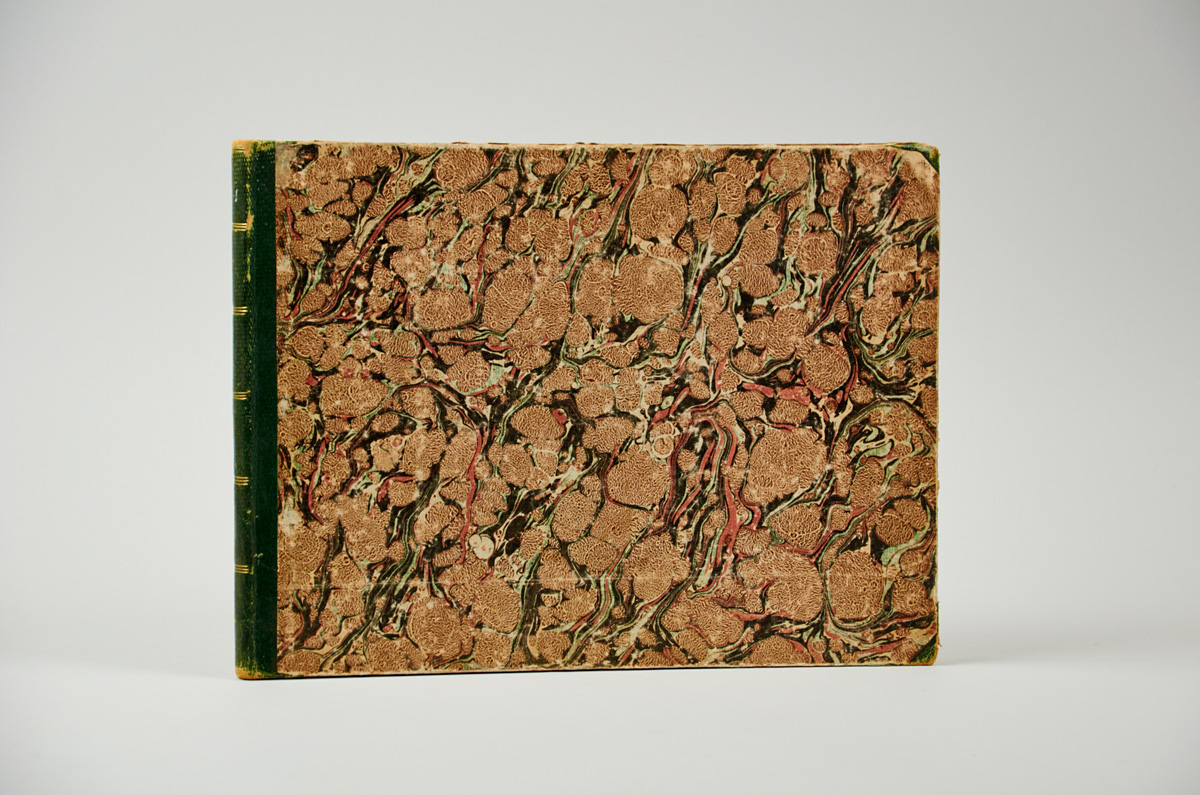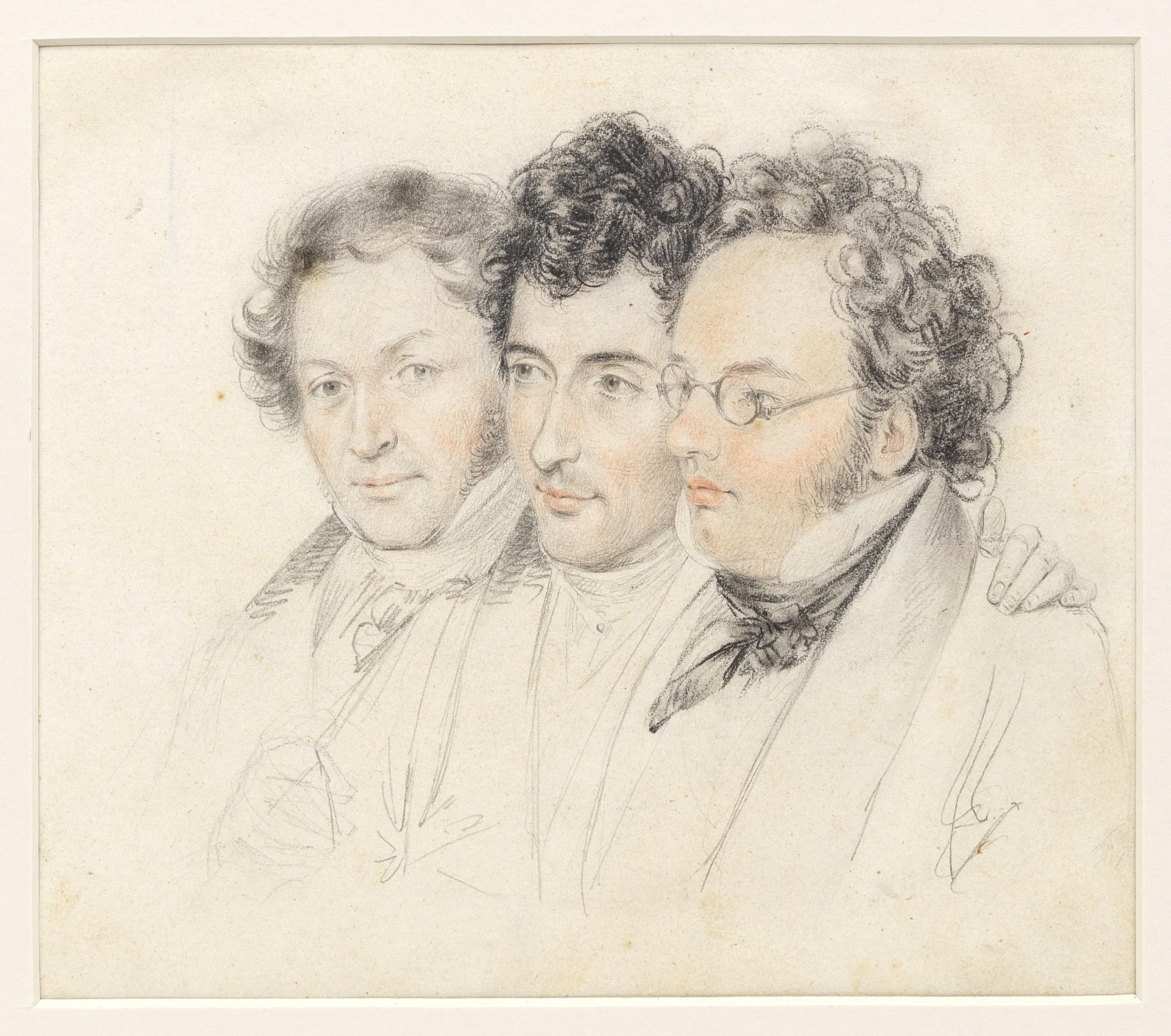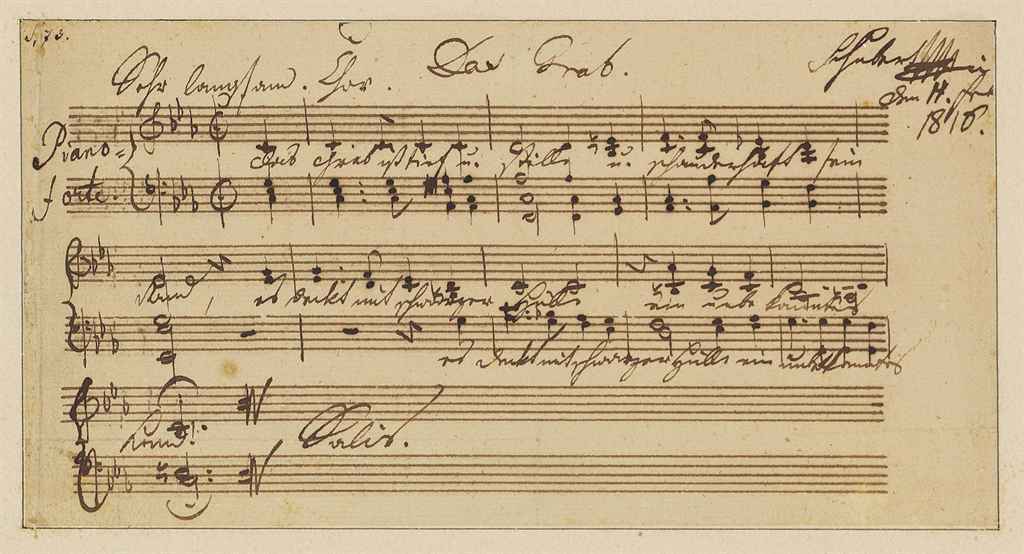Franz Schubert
One first and one early song edition
1) Auf dem Wasser zu singen. Gedicht von Leopold Grafen zu Stollberg. In Musik gesetzt für eine Singstimme mit Begleitung des Pianoforte von Franz Schubert. 72tes Werk. Eigenthum der Verleger [D.774], Vienna: bei Ant. Diabelli & Comp. Graben No.1153, [1827]
First edition as a separate publication, 7 pages, large oblong folio (25.2 x 33.7cm), engraved throughout, plate number 2487, note in the hand of Albi Rosenthal on inside front cover ("First separate edition 2 March 1827’’), modern marbled boards, browning to title, elsewhere some light spotting
2) Gesänge des Harfners aus Wilhelm Meister, von Goethe, für Singstimme mit Begleitung des Pianoforte, in Musik gesetzt, und Seiner bischöflichen Gnaden, dem Herrn Joh: Nep: Ritter von Dankesreither…gewidmet von Franz Schubert. 12tes Werk...Pr. 1. 45 X.C.M. [D.478], Vienna: bey A. Diabelli et Comp. Graben No.1133 [after 1822]
11 pages, large oblong folio (c.26 x 34cm), engraved throughout, plate number 1161, some later pencil annotations to title, with inserted note in the hand of Albi Rosenthal, unbound, modern cloth folder, light scattered spotting, some dust-staining to edges and last blank page, vertical folds Schubert’s great song Auf dem Wasser was originally published as a supplement to the Wiener Zeitschrift für Kunst, Literatur, Theater und Mode of 30 December 1823. The present edition was advertised on 2 March 1827 in Vienna. The text is by Stollberg, beginning "Mitten im Schimmer der spiegelnden Wellen" ("Mid the glitter of the sparkling waves").
The Gesänge des Harfners contain three songs, settings of poems from Goethe’s novel Wilhelm Meisters Lehrjahre: Wer sich der Einsamkeit ergibt ("Who surrenders to loneliness"); Wer nie sein Brod mit Thränen ass ("Who never ate his bread with tears"); An die Thüren will ich schleichen ("I will creep up to people’s doors"). The first two songs at least make much of rippling effects and arpeggios, in imitation of a harp. These versions date from 1822. Schubert’s first attempts date from as early as 1816.
LITERATURE:Hoboken, xiii 302 (D.774); cf. 67 (D.478)
PROVENANCE:Otto Haas
Franz Schubert
One first and one early song edition
1) Auf dem Wasser zu singen. Gedicht von Leopold Grafen zu Stollberg. In Musik gesetzt für eine Singstimme mit Begleitung des Pianoforte von Franz Schubert. 72tes Werk. Eigenthum der Verleger [D.774], Vienna: bei Ant. Diabelli & Comp. Graben No.1153, [1827]
First edition as a separate publication, 7 pages, large oblong folio (25.2 x 33.7cm), engraved throughout, plate number 2487, note in the hand of Albi Rosenthal on inside front cover ("First separate edition 2 March 1827’’), modern marbled boards, browning to title, elsewhere some light spotting
2) Gesänge des Harfners aus Wilhelm Meister, von Goethe, für Singstimme mit Begleitung des Pianoforte, in Musik gesetzt, und Seiner bischöflichen Gnaden, dem Herrn Joh: Nep: Ritter von Dankesreither…gewidmet von Franz Schubert. 12tes Werk...Pr. 1. 45 X.C.M. [D.478], Vienna: bey A. Diabelli et Comp. Graben No.1133 [after 1822]
11 pages, large oblong folio (c.26 x 34cm), engraved throughout, plate number 1161, some later pencil annotations to title, with inserted note in the hand of Albi Rosenthal, unbound, modern cloth folder, light scattered spotting, some dust-staining to edges and last blank page, vertical folds Schubert’s great song Auf dem Wasser was originally published as a supplement to the Wiener Zeitschrift für Kunst, Literatur, Theater und Mode of 30 December 1823. The present edition was advertised on 2 March 1827 in Vienna. The text is by Stollberg, beginning "Mitten im Schimmer der spiegelnden Wellen" ("Mid the glitter of the sparkling waves").
The Gesänge des Harfners contain three songs, settings of poems from Goethe’s novel Wilhelm Meisters Lehrjahre: Wer sich der Einsamkeit ergibt ("Who surrenders to loneliness"); Wer nie sein Brod mit Thränen ass ("Who never ate his bread with tears"); An die Thüren will ich schleichen ("I will creep up to people’s doors"). The first two songs at least make much of rippling effects and arpeggios, in imitation of a harp. These versions date from 1822. Schubert’s first attempts date from as early as 1816.
LITERATURE:Hoboken, xiii 302 (D.774); cf. 67 (D.478)
PROVENANCE:Otto Haas












.jpg)


Try LotSearch and its premium features for 7 days - without any costs!
Be notified automatically about new items in upcoming auctions.
Create an alert